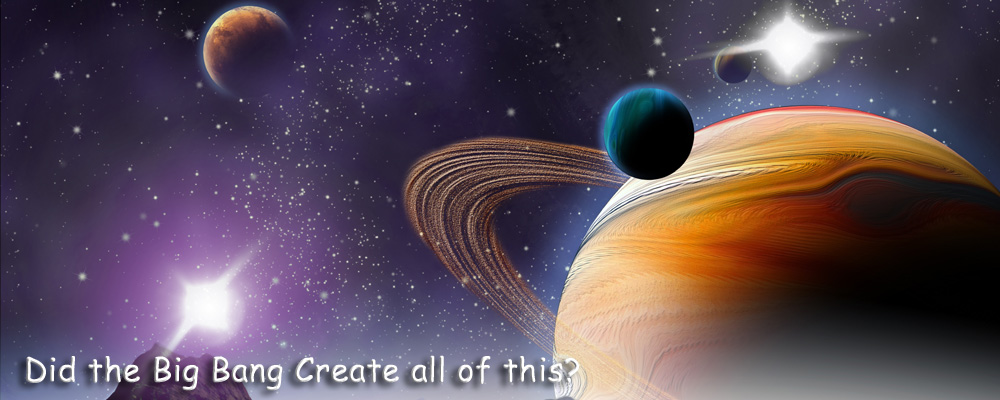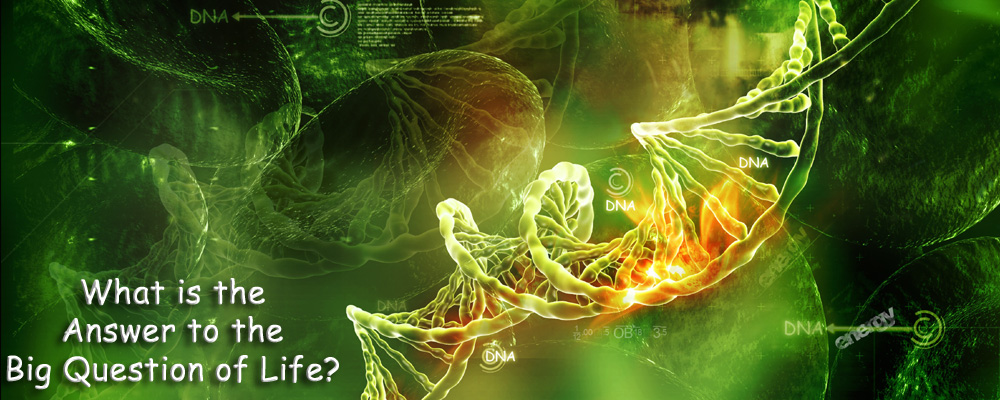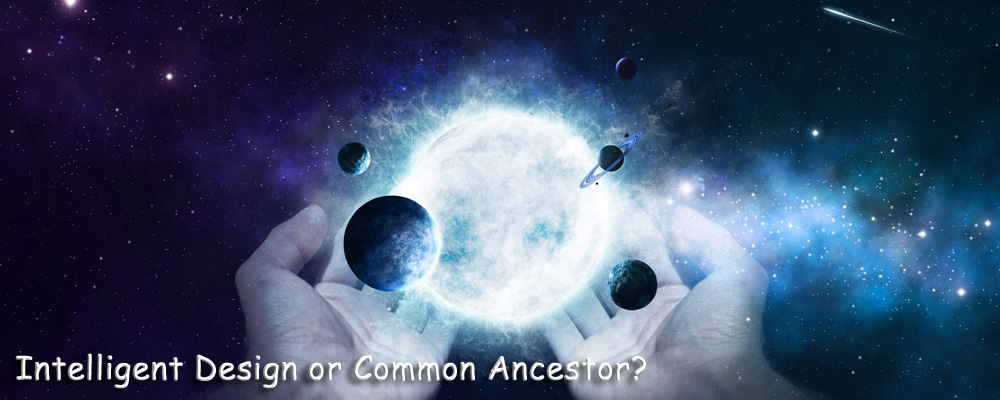




The following is a quote from Edwin Hubble having recognised the logical consequences of his own discovery of Red Shifts.
“Such a condition would imply that we occupy a unique position in the universe, analogous, in a sense, to the ancient conception of a central Earth...This hypothesis cannot be disproved, but it is unwelcome and would only be accepted as a last resort in order to save the phenomena.”
Until fairly recently the expected response to the above chapter title may have included the words “rubbish” and “you cannot be serious.” The earth and its galaxy had long been placed far from the centre of anything. Nicholas Copernicus began this process of reducing both our planet and us to mediocrity when he correctly deduced it was the sun and not the earth that stood at the centre of our solar system.
Wikipedia presents the “facts” of the matter.
‘The traditional formulation of the Copernican mediocrity principle is usually played out in the following way: Ancients of the Middle East and west once thought that the Earth was at the centre of the universe, but Copernicus proposed that the Sun was at the centre. In the 1930’s, R J Trumpler found that the solar system was not at the centre of the Milky Way Galaxy...but 56% of the way out to the rim of the galaxy's core. In the mid-
The comment “Every point in space experiences the same phenomenon” is a one we will return to later. It is one that has certainly caused a number of statements to be made, some of which do not seem to belong to the language of science. It is important to establish just how contemptuously seemingly good scientists have dismissed any move which even twitches in the direction of a special place for planet earth, or that accidental parasite clinging to its surface: mankind.
If you want a more lyrical opinion then there is Carl Sagan.
‘The Earth is a very small stage in a vast cosmic arena…Our posturing's, our imagined self-
Pale Blue Dot: A Vision of the Human Future in Space, Ballantine Books, New York.
The current position, the cosmological principle states that averaged out over large enough distances, one part of the Universe looks approximately like any other. There is no centre, in fact cosmologists have developed their Big Bang theory to ensure there is no centre. Imagine a blown up balloon that is still being inflated and you get the beginning of the idea. The galaxy clusters are scattered relatively uniformly over its surface area. An insect could crawl endlessly over this surface without ever discerning a centre. The space within the balloon is empty and is known as hyperspace. Thus the idea of a centre is circumvented: lost in hyperspace. To get a measure of the importance of this belief we need to hear the words of two of the greatest figures in the lexicon of science: Edwin Hubble and Stephen Hawking. What they say in the face of evidence unpalatable to them is an education in boyish evasion techniques.
In 1929 Edwin Hubble announced that all galaxies were moving away from us and that the universe was expanding. This was described as a redshift in a galaxy’s or in a quasars spectrum. The further away the galaxy the greater the wavelength redshift. This led to the doctrine that these redshifted galaxies were speeding away from us faster than those located closer to us. The greater the redshift the greater the velocity and distance.
Before hearing the words of Hubble and Hawking it is worth looking at the situation from their point of view. If the earth were discovered to occupy a central position in the universe then two fundamental principles in cosmology would require fresh examination and more probably a total overhaul.
Firstly, the Cosmological Principle, which demands that the universe be homogeneous with no favoured centre, is violated by the centrality of anything, let alone the earth. Secondly such a view would be contrary to the dogmatic philosophical declaration of science (so well expressed by Carl Sagan) that the earth and humankind are of no great significance.
What Edwin Hubble had discovered was a phenomena which indicated everything was speeding away from the earth in all directions, implying a central axis located on earth. How did Hubble react to the possible inference that the earth could be uniquely placed at the centre of the universe. From the following it can be said that he was not ecstatic.
“…Such a condition would imply that we occupy a unique position in the universe, analogous, in a sense, to the ancient conception of a central Earth...This hypothesis cannot be disproved, but it is unwelcome and would only be accepted as a last resort in order to save the phenomena. Therefore we disregard this possibility.... the unwelcome position of a favoured location must be avoided at all costs.... such a favoured position is intolerable...Therefore, in order to restore homogeneity, and to escape the horror of a unique position…must be compensated by spatial curvature. There seems to be no other escape."
DISREGARDED BECAUSE IT IS UNWELCOME! INTOLERABLE! AVOIDED AT ALL COSTS! THE HORROR!
Please think about it, what would you think of a person who used such expressions and words to reject the theory of evolution? That was an astonishing reaction from a scientist who would normally profess to be looking for truth and reality through the scientific method laid down centuries earlier by Francis Bacon and the founders of the Royal Society. All that good practice seems to have been thrown aside in a violent fit of pique. Stephen Hawking writes on the same subject in A Brief History of Time.
“...all this evidence that the universe looks the same whichever direction we look in might seem to suggest there is something special about our place in the universe. In particular, it might seem that if we observe all other galaxies to be moving away from us, then we must be at the centre of the universe.”
As that cannot be true, not for reasons of science but for the reason that it unsettles a foundational philosophical principle, he suggests the following alternative.
“There is, however, an alternate explanation: the universe might look the same in every direction as seen from any other galaxy, too. This, as we have seen, was Friedmann’s second assumption. We have no scientific evidence for, or against, this assumption. We believe it only on grounds of modesty: it would be most remarkable if the universe looked the same in every direction around us, but not around other points in the universe.”
Hawking opts out of facing the observable facts by postulating a theory based on an assumption for which there is “no scientific evidence” and the disagreeable thought that a centrally located earth would be “most remarkable.”
Interestingly it never seems to occur to him that a mathematical equation and computer programmes should be able to work out from the known positions of galaxies exactly what an observer with a telescope on a distant galaxy would see. As far as I can discover the only study done into this was by a creationist scientist who stated that a view from a position very different from our own would cause the present view to vanish, to be replaced by one that would not appear either remarkable or special. Why would world class mathematicians just wring their hands? Why do they not prove that the view from elsewhere would be identical to our own?
Hawking is prepared to base his "modesty" convictions on an "assumption" that cannot be proved empirically.
He believes this unsubstantiated 1920’s equation of Friedmann’s on the grounds of “modesty”. Is this the word modest, meaning self-
A famous cosmologist George Ellis who has co-
“People need to be aware that there is a range of models that could explain the observations....For instance, I can construct you a spherically symmetrical universe with Earth at its centre, and you cannot disprove it based on observations.”
The Creationist scientist Russell Humphreys has written a book called Starlight and Time that proposes just such a model.
Ellis also wrote.
"You can only exclude it on philosophical grounds. In my view there is absolutely nothing wrong in that. What I want to bring into the open is the fact that we are using philosophical criteria in choosing our models. A lot of cosmology tries to hide that.”
This is cosmology that leaves you orbiting cloud cuckoo land. Scientists with the mindsets of Hubble and Hawking will mock those who believe in Genesis. And just for a moment let us consider Genesis. What does it say? That the earth is central to God’s purpose, that everything else in the universe is secondary and was created for that which God put on earth, most particularly mankind. He created earth to engender life. The stars and planets to give light and to measure the hours and days and months and seasons and years; and to enable us to navigate the land and sea. How many ancient archeological sites are now known to have centred around understanding the course of the sun and stars. The stars in the heavens all exist at least in part to sponsor worship of our maker, to stoke our curiosity and inflame our imaginations. So to a believer in God to find that earth could be at the physical centre of the universe is a joy and a confirmation. To the atheist it is a threat and a problem as illustrated by the two greats of science quoted above.
Hawking and Hubble reacted like choir boys caught fingering the pages of a Playboy magazine.
In Christianity Jesus Christ is the cornerstone. In cosmology it is the philosophy of earth’s fundamental unimportance and mediocrity. The Earth is seen as nothing more than the beneficiary of a modest star that shines in an modest galaxy. Life arose spontaneously and we along with all other species evolved only as an accident. The concepts of purpose and significance are the product of an illusory religious spasm that for a few millennia fed us a false hope. The earth is just a rock that got lucky in a cosmic sweepstake. This model is supported by the Big-
A particularly interesting fact is the apparent location of earth in relation to observable space. All observations indicate that we are at the centre of the universe! All current theories point in the opposite direction. This has some serious implications, as demonstrated by Edwin Hubble’s colourful response to the implications of his own discovery: the redshifted wavelengths that first suggested the earth’s central position in the universe. Hubble is not rejecting the central position of the earth on the basis of evidence, he’s disallowed it purely because he cannot cope with the idea that Earth might be a singularity, something entirely unique. Most scientists had thought only in terms of a universe with no centre, edge or boundary.
The Australian physicist John Hartnett in quoting Richard Feynman finds a useful and telling admission
“It would be embarrassing to find, after stating that we live in an ordinary planet about an ordinary star in an ordinary galaxy, that our place in the universe is extraordinary…to avoid embarrassment, we cling to the hypothesis of uniformity.”
Hawking and Feynman use words like modesty, embarrassment! But what kind of words are these in this context and what do they have to do with the pursuance of science? Many theories are only validated on assumptions, and for the most part these assumptions are not or cannot ever be empirically proven. George Ellis is convinced that the multiverse theory can never be proved because no test can ever even conceivably be applied to the hypothesis. In the case of the position of earth there are no actual observations which suggest anything other than that we occupy a unique location in the cosmos. And yet the multiverse theories gets 99.9% of theoretical physicists attention and the place of the earth whatever is left. This strange reality persists only because the majority scientific opinion, which is largely based on enlightenment thinking and atheistic evolutionary assumptions, will never concede that planet Earth is anything other than mediocre.
Dr Max Tegmark of the University of Pennsylvania speaking about the results from a study of the universe named WMAP called the result “bizarre”. The reason being that when the collected data was superimposed upon a sphere, representing the way it was collected (from every direction in space) it produced a perfect pattern of cosmic north and south poles and a cosmic equator. He said, “It could be telling us something about the shape of space on the largest scales. We did not expect this and we cannot explain it.”
Could it be that the universe is an inflated version of our own globe with the earth, in terms of light years, very close to its centre?
Two surveys of the universe: the 2dF Galaxy Redshift Survey and the Sloan Digital Sky Survey have produced astounding results, that could, if permitted, change the face of cosmology and jettison the Big Bang theory. These projects essentially discovered that the observable galaxy is arranged in concentric rings / shells around Earth. This is an important point which needs emphasising. Two studies of the universe, not only indicate that Earth is at the centre of everything, but that everything is arranged in a noticeable pattern around it. Combine this with Paul Davies’s book The Goldilocks Enigma (everything seems just right for life), the laws of physics, the fine-
The Sloan Digital Survey produced photos that produced a cosmic map showing approximately 33,500 galaxies. The parts of the universe unable to be seen are because our own galaxy blocks or interferes with the view. There is a roughly concentric distribution of galaxy clusters radiating above the point of the wedge. What is inescapable is the clear evidence that these concentric rings, separated one from another at regular intervals. At least five of them are visible. The odds against this are truly astronomical and way beyond the range of evolutionary chance. Also readily apparent is a decrease in galaxy density with increasing distance from the earth. This is the opposite of what the Big Bang theory predicts. Both these observable features contradict the Cosmological Principle.
One particularly spectacular picture shows two wedge shaped slices. Imagine a round plate filled with a pizza. Then take out two quarters, the ones to the east and west, leaving the two from the north and south. That is what appears on the photograph. Two wedges narrowing to meet in the middle at a single point. The missing sides represent those parts of the universe unable to be mapped.
The New Scientist magazine: no friend of creationism, had this little piece set beneath the photograph, which unfortunately cannot be shown here for copyright reasons, but is as described above. Below and printed in a blue/grey so faint it is not all that easy to read is the following. I wonder, did New Scientist want this little tidbit to pass by unnoticed? To compensate for their pale grey blue I have added emphasis to the part they no doubt find most objectionable.
“The Sloan Digital Sky Survey has made detailed 3D maps of relatively nearby galaxies. The Earth is at the centre of these wedges, and each point represents a galaxy, with the outer circle at a distance of 2 billion light years. The region between the wedges was not mapped by the SDSS because dust in our own galaxy obscures the view of the distant universe in these directions.”
Set out below is something like how it appeared in print.
“The Sloan Digital Sky Survey has made detailed 3D maps of relatively nearby galaxies. The Earth is at the centre of these wedges, and each point represents a galaxy, with the outer circle at a distance of 2 billion light years. The region between the wedges was not mapped by the SDSS because dust in our own galaxy obscures the view of the distant universe in these directions.”
Never before in all the reading I have done have I ever seen anything like this in any publication trying to convey information. It gives some idea just how unpopular this result was. The pale grey/blue type on the New Scientist web page is proof enough. But the mindset that conceived this piece of obfuscation goes beyond obscuring information. It is prepared to bring down critics. Any scientist who rubs salt into the wound of the cosmological principle is unlikely to find favour or be received well by mainline cosmologists whose major preoccupation seems to be to prop up the Big Bang Theory... One such heretic is Halton C Arp.
He was a scientist who ran into trouble from his colleagues for doing nothing more than trampling over their holy ground. Arp’s ability to continue his work was compromised simply because he found fault with the Big Bang theory through the application of observable data. Photographic evidence which unsettled the old orthodoxy relating to redshifts. Arp received his Bachelors degree from Harvard College in 1949 and his Ph.D. from California Institute of Technology in 1953, both cum laude. He was a professional astronomer who, earlier in his career, conducted Edwin Hubble's nova search in the M31 galaxy. He earned the Helen B.Warner prize, the Newcomb Cleveland award and the Alexander von Humboldt Senior Scientist Award. For 28 years he was staff astronomer at the Mt. Palomar and Mt. Wilson observatories. While there, he produced his well known catalogue of "Peculiar Galaxies".
From photographs and spectra he discovered that many quasars which have extremely high redshift z values, and therefore highly redshifted, are physically connected to galaxies that have low redshifts and are, by astronomical standards, relatively local to our Milky Way. He produced example after example, each one verified through photography and other methods that demonstrate direct links between a parent galaxy and a quasar. Each one has been dismissed by the ruling club in cosmology, including NASA. They argued that his images represented coincidental relationships that are in fact nothing more than optical illusions. The fact that these coincidences occur time and again was discounted. These people failed to see what was obvious even to amateur astronomers who noted the same phenomena; there are none so blind as those who do not want to see.
Remember Hubble and Hawking and their denials of evidence. Galileo pleaded with his persecutors to look at the evidence he had seen. They would not because they could not bear being faced with an unpalatable truth.
These quasars seen by Arp were highly redshifted, the galaxies that seemed to be their companions were low redshifted. The distances between the quasars and the galaxies should have been vast according to Hubble’s Law, but Arp argued they were close to one another. He further argued that redshifts are not even primarily due to velocity. He believes they have an inherent value. That they are young and much closer to us than classic cosmology would lead you to believe. He is a scientific heretic and heresy must be silenced. Because of these observations, the assumption on which the Big Bang theory rests, are according to Arp, fundamentally flawed and need to be re-
He has actual evidence, a comparative rarity in cosmology. His arguments could easily be proved wrong by turning the great telescopes onto the galaxies and quasars he has identified, but they will not. They would rather cling to a comfortable falsehood than have observable facts prove Copernicus, Hubble’ Law, the Big Bang, and the Cosmological Principle all wrong: a matter of redshifts before red faces perhaps.
William G Tifft has shown that the existence of preferred values for redshifts proves that either we are at the centre of a series of expanding shells, or redshift does not indicate velocity.
The following is from Wikipedia.
‘Tifft is Emeritus Professor / Astronomer at the University of Arizona. His main interests are in galaxies, superclusters and what Tifft calls redshift problems (see redshift quantization) He was influential in the development of the first redshift surveys....Based on observations of nearby galaxies, Tifft has put forward the idea that the redshifts of galaxies occur preferentially as multiples of a set number, in other words that they are distributed in fixed steps, i.e. quantized. These findings on redshift quantization were originally published in 1976 and 1977 in the Astrophysical Journal. The ideas were controversial when originally proposed; the editors of the Astrophysical Journal included a note in one of the papers stating that they could neither find errors within the analysis nor endorse the analysis. Subsequently Tifft and Cocke put forward a theory to try to explain the quantization. Tifft's results have been largely replicated by Croasdale, and later Napier and Guthrie. Croasdale did a comprehensive analysis of the statistical significance and confirmed the special frame in which quantization is found to be the same over the whole sky. Since the initial publication of these results, Tifft’s findings have been used by others, such as Halton Arp. in making an alternative explanation to the Big Bang Theory, which states that galaxies are redshifted because the universe is found to be the same over all the sky.’
Russell Humphreys Ph.D is a creationist scientist. He wrote the following in Creation.com
‘Over the last few decades, new evidence has surfaced that restores man to a central place in God’s universe. Astronomers have confirmed that numerical values of galaxy redshifts are ‘quantized’, tending to fall into distinct groups. According to Hubble’s law, redshifts are proportional to the distances of the galaxies from us. Then it would be the distances themselves that fall into groups. That would mean the galaxies tend to be grouped into (conceptual) spherical shells concentric around our home galaxy, the Milky Way. The shells turn out to be on the order of a million light years apart. The groups of redshifts would be distinct from each other only if our viewing location is less than a million light years from the centre. The odds for the Earth having such a unique position in the cosmos by accident are less than one in a trillion. Since big bang theorists presuppose the cosmos has naturalistic origins and cannot have a unique centre, they have sought other explanations, without notable success so far. Thus, redshift quantization is evidence (1) against the big bang theory, and (2) for a galactocentric cosmology.’
He has written a book aimed at showing how light could have returned almost instantly to the earth from the farthest ends of the universe titled Starlight and Time. He received a B.S. degree in physics at Duke University, 1959–1963. After this, he moved to Louisiana State University (LSU) to study postgraduate physics. In 1969, while doing his dissertation research for LSU in the mountains of Colorado, he committed his life to Christ. In 1972, he was awarded a Ph.D. in physics, on cosmic rays and ultrahigh energy nucleon–nucleon interactions, by which time he was a fully convinced creationist due to both the biblical and scientific evidence. For the next 6 years he worked in the High Voltage Laboratory of General Electric Company, designing and inventing equipment and researching high–voltage phenomena. While there, he received a U.S. patent and one of Industrial Research Magazine’s IR–100 awards.
Big Bang proponents have a stranglehold over the science of cosmology. Like evolution it cannot be denied. These theories are like religions masquerading as science. Many of these people do not deal with the real world, they are theoreticians who talk of a multiverse, superstrings, and wormholes, none of which have ever been seen or experienced. These people are like philosophers, happiest when debating amongst themselves in the rarefied atmosphere of academia. The cosmologist George Ellis, during a Q& A session following a lecture where many scientists were present, reported an account from a colleague who described one of these theoretical jamborees attended by some of the greatest names in science. She said it was like Alice in Wonderland. Ellis said they are taking science back two thousand years. One thing is for sure, no-
I confess to being just the messenger of this information. I do not profess to have any proper understanding of these issues. This is an argument going on way over my head. Nevertheless the weakness in the Cosmological Principle and the Big Bang theory are readily apparent from the comments of the many scientists quoted above. The evidences against seems compelling, and that much I can understand and appreciate. I can see with my own eyes the photograph published in New Scientist and marvel that our little earth seems to be the resident fulcrum at the centre of a vast universe. I have seen the photos of the strange ‘connection’ between the galaxy NGC4319 and the quasar Markarian 205 linked by an obvious spectra to a quasar. This is impossible according to Hubble’s Law. Many things just do not add up, too many to be just dismissed.
George Ellis is a top grade scientist who unlike Arp has seemingly not yet fallen out with the establishment.
George Francis Rayner Ellis, FRS, Hon. FRSSAf, (born 11 August 1939), is the Emeritus Distinguished Professor of Complex Systems in the Department of Mathematics and Applied Mathematics at the University of Cape Town in South Africa. He co-
I listened to a videoed lecture by Ellis titled: On the Nature of Cosmology Today.
What he said was truly extraordinary. He is certainly open to the possibility of cosmological models other than the Big Bang. He argues that the laws of physics do not just describe what happens but most likely controls what happens. That these laws pre-
The Bible makes sense of every aspect of the reality George Ellis describes. By definition God is an uncreated being who pre-
A small child knows that it is special to its parent because of the centrality of that child’s position in the family. It seems as if we have been placed in just such a special position.
The video below is by Dr Jason Lisle: a Creationist scientist who has a PhD in Astrophysics, University of Colorado in Boulder. His postgraduate research concentrated on solar dynamics, utilizing NASA’s Solar and Heliospheric Observatory ( SOHO) to monitor the surface of the sun. His PhD dissertation “Probing the Dynamics of Solar Strangulation and its interaction with Magnetism” is available from the University of Colorado and he has published numerous papers in scientific literature concerning convection cells in the sun. In other words it is worth your time listening to his views on the cosmos.

| The Gospel through Art |
| Built on Rock Websites |
| Christian Flash Mobs |
| The Ark |
| Genesis 3D Movie |
| Dinosaurs for Dummies |
| Richard Dawkins - What if? |
| More to Life |
| About Built on Rock |
| Useful Links |
| Book a Talk |












